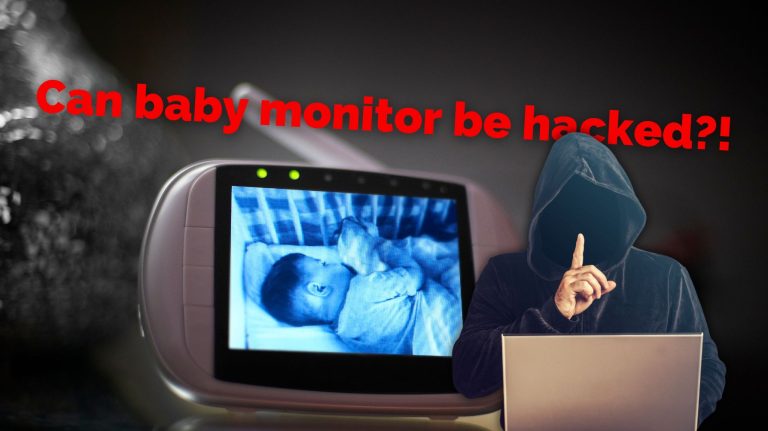
Understanding the Safety of Baby Monitors: Security Measures and Risks Explained
- Created:
26. 6. 2024 - Updated:
26. 6. 2024
When choosing baby monitor, you might start thinking if can baby monitors be hacked.
Baby monitors are an indispensable part of a essential gear for the baby, but it should be borne in mind that it brings with it security issues. Figuring out what those risks are and putting strong security measures in place can help lower baby monitor hacking threats.
We’ll dig into some questions, like whether Wi-Fi baby monitors are easier for hackers to get into and if non-WiFi baby monitor can also be hacked.
This article will give you the lowdown on baby monitor security, sharing tips on spotting if your baby monitor has been hacked and what you can do to protect your baby’s privacy.
Parents’ time is precious, so let’s dive right in!
Can baby monitor be hacked?
If you buy a video monitor to keep your child safe, are you also introducing extra danger into your house?
The answer, according to several experts, is that baby monitors are hackable. Anything on the internet of things—IOT, which includes any device that uses the internet—is able to be hacked.
Eric Magidson, professor of Computer Information Systems at Central Oregon Community College, says, “There are a lot of companies building a lot of IOT devices, getting them out to market and being first. Thus, security can—and does—take a back seat to getting these products out on the market.”
How Hacking Works in General
Using a product that relies on an internet connection opens the door for hackers to enter. But the likelihood of hackability is based on how much time a hacker has (which also involves how tough it is for the hacker to work through the code), the username and passwords you use, and how secure the software of a device is.
Hackers can find their way into a system via your network—which would compromise all your devices, including a baby monitor—or through the device itself.
🔍 In the VTech case, the hacker was able to access the devices, which allowed them to pull information from caregivers’ smartphones. This is the most common hacking strategy. Owlet cam user registered a similar problem.
Wi-Fi baby monitors remain hackable, but can be safe using advanced protection measures, such as AES 256-bit encryption technology, offering a security level that minimizes the risk of baby monitor hacking dramatically.
Even non-WiFi baby monitors can be hacked if the hacker is close enough and knows the right frequency. Non-WiFi baby monitors communicate over certain frequencies within a limited physical range. To intercept these signals, hackers need to place themselves within this range and must know the specific frequency on which the monitor operates.
Modern non-WiFi monitors use encrypted channels, making it harder for hackers to crack them. So, they’re less likely to be hacked, which lowers the risk overall.
📚 Additionally, some of the non-WiFi models use Frequency-Hopping Spread Spectrum (FHSS) technology to make sure the devices are even more secure against potential intruders.
BUT:
Rarely do hackers actually enter into a local video stream, although this is a possibility. More frequently, hackers are chasing access to credit card information, addresses and beyond, within a system.
This Is How Creeps Hack Your Baby Monitor
Hackers can get into baby monitors by using weak or default passwords, unsecured Wi-Fi, and outdated firmware.
They often find default passwords online or guess weak ones. If the Wi-Fi isn’t secured, they can intercept data or crack the password. Also, outdated firmware can have vulnerabilities that hackers use.
To protect your baby monitor, always change the default password to a strong, unique one. Secure your Wi-Fi with strong encryption and a unique password, and regularly update the monitor’s firmware. Make sure any internet access is secured, and consider using two-factor authentication if possible. Keep an eye on access logs for any shady stuff. Setting up a separate network for your baby monitor and other IoT devices can also up the security game.
How to Tell if Your Baby Monitor Is Hacked
Unusual noises or voices
Hearing strange voices, music, or sounds through your baby monitor can be alarming. If these noises are unrelated to anything in your house (like the TV downstairs or your dryer making a racket), it could be a sign that your monitor was hacked.
Unexplained camera movements
Many modern baby monitors come with the ability to pan, tilt, and zoom remotely. If you notice strange behavior on your video feed, like the camera moving independently without your input, someone may have gained remote access.
Changes in security settings or credentials
Someone else may have access if your baby monitor’s settings have been altered or you’re suddenly locked out.
Strange LED light activity
Keep an eye on the LED lights on your baby monitor. If they’re blinking or turning on and off at odd times, especially when no one is using the device, it might be under the control of a hacker.
Unknown IP addresses
Review the devices connected to your home network. If you find an IP address that doesn’t belong to you, that’s a red flag that could indicate a hacker is on the network.
Unusual activity on your home network
Odd behavior across your home network, like devices connecting and disconnecting without reason or internet speeds slowing down drastically, can also indicate that your baby monitor or other devices have been compromised.
What to Do if Your Baby Monitor Has Been Hacked?
If you suspect that a hacker has gained access to your baby monitor, it’s crucial to take immediate action. Your first priority should be stopping the hacker from being able to access the camera. Here are the steps to take.
- Unplug the baby monitor. The first step is to disconnect your baby monitor so that remote access is no longer possible. Unplug the monitor while you complete the other steps.
- Change your passwords. Remember to change potentially pwned passwords, especially those on your baby monitor’s app. Choose a strong, complex password — never reuse it for different accounts. Make sure you select the option that logs you out of the account on all devices (including the potential hackers). You can then log back in using the new password.
- Change your Wi-Fi password. It’s also a good idea to change your network’s password. By changing your Wi-Fi password, you’ll cut off any unauthorized access. Remember to choose a strong and unique password — the more complex, the better.
- Report the incident. Consider reporting the incident to the relevant authority in your country. If your baby monitor was hacked, chances are you’re not the only one. Reporting the incident can help prevent similar incidents in the future and perhaps catch the person responsible.
- Contact customer support. You should also let the manufacturer’s customer support know about the incident so they can investigate. Informing them about the incident may also help the manufacturer address the security vulnerabilities to prevent similar incidents in the future.
- Consider changing your device. If your baby monitor’s been hacked, you should consider investing in a different device, perhaps one with advanced security features. While most baby monitors don’t have antivirus software, some modern digital baby monitors have other advanced security measures.
How to Protect Your Baby Monitor From Hackers
While completely preventing hacking is challenging, you can improve the security of your baby monitor and your other connected devices with the following steps.
- Use two-factor authentication. If your baby monitor’s app or account supports two-factor authentication, enable it for an added layer of security. With two-factor authentication, you will be asked to log in using an additional step, like entering a one-time code or using biometric authentication (e.g., Face ID).
- Regularly install updates. Keep your baby monitor and the associated app up to date, and never delay essential updates. Regularly updating devices means you’re not missing out on necessary security patches.
- Make sure you read the user manual. This tip may sound simple, but baby monitors can come with various security features, depending on the manufacturer. Familiarize yourself with what security measures the baby monitor offers — the more you know, the better prepared you are.
- Secure your internet router. Protect all devices connected to your router with a VPN. Setting up a VPN on your router encrypts your internet traffic, making it more difficult for hackers to gain unauthorized access. Download a VPN now to secure your entire home network.
You may also want to cover the baby monitor’s camera when not in use. While covering the camera won’t protect you against hacking, it may increase your privacy if the monitor is already hacked. You can find reliable camera blockers online.
To Sum It Up
So, are baby monitors safe? You’ve seen that they can be if you take the right precautions.
WiFi monitors offer live streaming, but you gotta make sure you’ve got strong security measures in place. If you’re all about the convenienceand don’t mind taking extra steps for cybersecurity, then they’re a great choice.
But remember, even non-WiFi monitors, while less vulnerable, still need solid security measures. Just like other gadgets, baby monitors can be at risk of getting hacked, no matter how they’re connected.
The level of risk mostly depends on the type of baby monitor, its security features, and what you’ve done to make your devices and networks more secure.
Remember, protecting your baby monitor from hackers isn’t an option but a necessity. Change default passwords and ensure your home network has strong passwords and encryption for the best protection.






